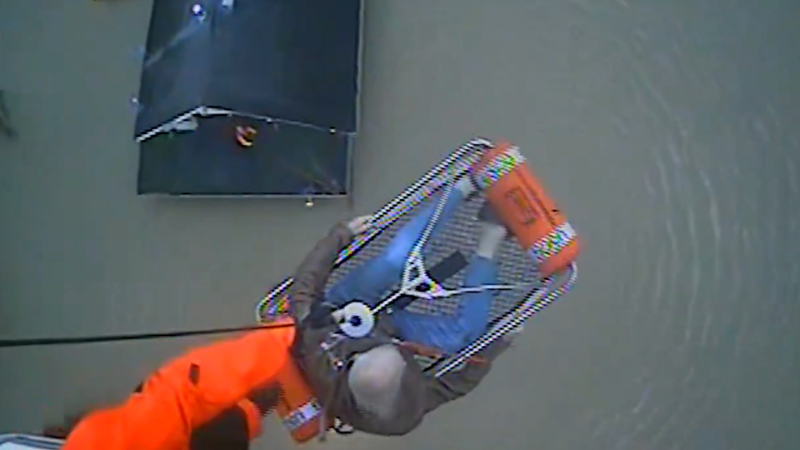Strengthening storm to bring urban flood threat, high winds to the Northeast
A storm forecast to rapidly strengthen is on track to bring drenching rain, urban flooding and powerful winds to the Northeast, but AccuWeather meteorologists say that a lack of cold air will limit the snow potential.
There are three distinct types of flooding that can happen during a tropical storm. Do you know what they are?
Following rain, some snow and ice in the Northeast to start the week, AccuWeather meteorologists are monitoring a stronger storm that is likely to begin affecting the region by Tuesday night. As the storm travels from the northeastern United States to southeastern Canada, it may evolve into a bomb cyclone and kick up strong winds, in addition to producing heavy rain along the Atlantic coast.
The storm will begin to gather strength in the Southeast as early as Tuesday. With warmth and moisture in place, thunderstorms are expected to rumble in southeastern Louisiana, southeastern Mississippi, central and southern Alabama and southwestern Georgia.
Thunderstorms will be accompanied by a mixed bag of flooding downpours, localized damaging wind gusts and even a tornado.

The storm will continue to gain intensity as it moves northward along a cold front Tuesday night and Wednesday. Mild air will surge northward ahead of the front greatly limiting wintry precipitation as moisture arrives on Tuesday night. Outside of Maine and Canada, even the mountainous terrain in the Northeast is expected to have plain rain on Tuesday night. Heavy rain, fog and temperatures above freezing will rapidly melt any existing snow on the ground and could cause flooding.
"After a cold snowy start to December, there will be a concern for an increased flooding threat in areas with a deep snowpack already in place, especially in areas downwind of Lake Erie and Lake Ontario that were buried in feet of snow," said AccuWeather Meteorologist Grady Gilman.

"A surge of mild and moist Gulf air will follow along and ahead of a wave of low pressure along a front pushing through the lower Mississippi Valley into the mid-Atlantic and up through the Northeast during the middle of this week," remarked Gilman.
As the storm and associated cold front progress eastward, rain that begins on Tuesday night will become heavier and steadier along I-95 on Wednesday.
I-81, I-95 issues due to windswept heavy rain, fog
"Wednesday is shaping up to be a very wet day up and down the I-95 corridor from northern Florida all the way to Maine," said AccuWeather Senior Meteorologist Bill Deger.
Have the app? Unlock AccuWeather Alerts™ with Premium+
Deger also warned that "both the morning and evening commutes in cities such as Washington, Baltimore, Philadelphia, New York and Boston can be slowed by downpours, which can also cause localized flooding."

“An intense band of rain may develop with gusty winds that can really hamper travel during the afternoon and evening commutes on Wednesday from the Carolinas to southern New England,” AccuWeather Senior Meteorologist Alex Sosnowski said. “Thunder and lightning could accompany the intense rain and urban flooding potential.”
The rapidly strengthening storm is likely to be designated as a bomb cyclone if the central pressure in the storm plunges 0.71 inches in 24 hours or less (24 millibars). It could do that as it takes a northerly track from the mid-Atlantic states to Quebec from Wednesday to Thursday.

Sosnowski added that strong southerly winds on the warm side of the storm can push ocean and bay water levels to the point of flooding at times of high tide on Wednesday. A brief period of beach erosion can also occur.
“While urban flooding seems likely with the event, because of the long-term drought, the rain should be well handled by most small streams and all of the major rivers,” Sosnowski said. “This rain can bring yet another boost to streams, lakes and reservoir levels.”

Much colder air, snow to follow rain and warmth
Even though the extent and amount of snow will be limited, colder air rushing in on the backside of the storm could cause rain to change to snow in the interior Northeast and in the mountains. While amounts should be light, rapidly dropping temperatures could cause previously wet roads to become slushy and then icy.
"Arctic air will quickly arrive on the backside of the storm, and although not quite as cold nor as long-lasting at the previous cold air mass, there will be a concern for a rapid freeze-up across the northern mid-Atlantic and Northeast," said Gilman.

Regardless of precipitation type and amount, a large expanse of real estate will contend with gusty winds. Winds will ramp up Wednesday afternoon into Thursday as the storm evolves into a bomb cyclone.
"With the storm strengthening as it moves off to the north and east, there will be some gusty winds, both ahead of and behind the storm. That combined with the rain can lead to significant delays at airports," cautioned Deger.
As temperatures tumble, the Great Lakes will spring to life with bands of heavy snow that can shut down travel from the Upper Midwest to the northern Appalachians from Wednesday afternoon to Friday.

AccuWeather has more detailed information on the Arctic air and lake-effect in a story released on Monday, Dec. 9.
The cold air is likely to ease by the weekend, with temperatures potentially rising above the historical average by early next week.
Want next-level safety, ad-free? Unlock advanced, hyperlocal severe weather alerts when you subscribe to Premium+ on the AccuWeather app. AccuWeather Alerts™ are prompted by our expert meteorologists who monitor and analyze dangerous weather risks 24/7 to keep you and your family safer.
Report a Typo














